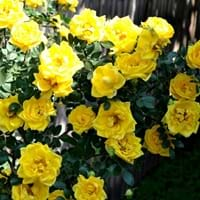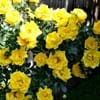Life Span
Perennial
Annual
Origin
Eastern Europe, Western Asia
South Africa
Types
Rosa Harisons Yellow, Rosa Persica
Shasta Daisy
Gloriosa Daisies
Painted Daisy
Pyrethrum Daisies
Habitat
gardens, Pastures, Prairies, Terrestrial, Tropical regions
gardens, Grassland
USDA Hardiness Zone
3-8
10-11
Sunset Zone
1a, 1b, 2a, 2b, 3a, 3b, 4, 5, 6, 7, 8, 9, 10, 11, 12, 13, 14, 15, 16, 17, 18, 19, 20, 21, 22, 23, 24
8, 9, 12, 13, 14, 15, 16, 17, 18, 19, 20, 21, 22, 23, 24
Habit
Oval or Rounded
Clump-Forming
Flower Color
Yellow
White, Yellow, Blue, Purple, Orange, Pink, Magenta
Flower Color Modifier
Not Available
Bicolor
Fruit Color
Non Fruiting Plant
Not Available
Leaf Color in Spring
Not Available
Green, Blue Green
Leaf Color in Summer
Not Available
Green, Blue Green
Leaf Color in Fall
Not Available
Green, Blue Green
Leaf Color in Winter
Light Green
Light Green
Leaf Shape
Pinnate
Arrowhead
Plant Season
Summer, Fall
Spring, Summer, Fall
Sunlight
Full Sun, Partial Sun
Full Sun
Type of Soil
Loam, Sand
Loam
The pH of Soil
Acidic, Neutral
Neutral
Soil Drainage
Well drained
Well drained
Bloom Time
Early Summer, Summer, Late Summer, Early Fall
Late Spring, Early Summer, Summer, Late Summer, Early Fall, Fall
Tolerances
Drought
Drought
Where to Plant?
Ground, Pot
Ground, Pot
How to Plant?
Grafting, Stem Planting, Transplanting
Seedlings, Stem Planting
Plant Maintenance
Medium
Medium
Watering Requirements
Form a Soil ring to water efficiently, Requires regular watering, Water twice a day in the initial period, Water when soil is dry
Allow soil to be completely dry in between waterings, It cannot sustain wet-feet, Keep the ground moist but not water-logged, Water in morning to avoid prompting diseases, Water twice a day in the initial period
In Summer
Lots of watering
Lots of watering
In Spring
Moderate
Moderate
In Winter
Average Water
Average Water
Soil pH
Acidic, Neutral
Neutral
Soil Type
Loam, Sand
Loam
Soil Drainage Capacity
Well drained
Well drained
Sun Exposure
Full Sun, Partial Sun
Full Sun
Pruning
Prune if you want to improve plant shape, Remove damaged leaves, Remove dead leaves, Remove deadheads, Shape and thin as needed
Cut or pinch the stems, Prune regularly, Remove deadheads
Fertilizers
All-Purpose Liquid Fertilizer, organic fertlizers
All-Purpose Liquid Fertilizer
Pests and Diseases
Aphids, Bacterial Diseases, Mites, Slugs
Red blotch
Plant Tolerance
Drought
Drought
Flower Petal Number
Not Available
Single
Edible Fruit
Not Available
No
Foliage Texture
Not Available
Medium
Foliage Sheen
Not Available
Not Available
Attracts
Not Available
Bees, Butterflies
Allergy
no allergic reactions
Not Available
Aesthetic Uses
Beautification, Bouquets
Beautification, Bouquets, Showy Purposes
Beauty Benefits
Not Available
Not Available
Environmental Uses
Air purification
Air purification
Medicinal Uses
No Medicinal Use
Cold, Cough, Stomach pain
Part of Plant Used
Flowers
Flowers
Other Uses
Showy Purposes, Used as Ornamental plant
Showy Purposes, Used as Ornamental plant
Used As Indoor Plant
No
Yes
Used As Outdoor Plant
Yes
Yes
Garden Design
Container, Cutflower, Feature Plant, Foundation, Mixed Border
Bedding Plant, Container, Cutflower, Foundation, Groundcover, Hanging Basket, Mixed Border, Rock Garden, Wall
Botanical Name
Rosa foetida
OSTEOSPERMUM
Common Name
Austrian briar, Persian yellow rose, Austrian copper rose
African daisy or Blue-eyed Daisy
In Hindi
Persian Yellow Rose
अफ्रीकी डेज़ी
In German
Persian Yellow Rose
African Daisy
In French
Persian Yellow Rose
marguerite africaine
In Spanish
Persian Yellow Rose
margarita africana
In Greek
Persian Yellow Rose
Αφρικανική μαργαρίτα
In Portuguese
Persian Yellow Rose
africano margarida
In Polish
Persian Yellow Rose
Gerbery
In Latin
Persian Yellow Rose
African primula
Phylum
Not Available
Anthophyta
Class
Not Available
Magnoliopsida
Family
Rosaceae
Asteraceae
Clade
Angiosperms, Eudicots, Rosids
Angiosperms, Asterids, Eudicots
Tribe
Not Available
Calenduleae
Subfamily
Rosoideae
Asteroideae
Number of Species
Not Available
Not Available
Importance of Persian Yellow Rose and African Daisy
Want to have the most appropriate plant for your garden? You might want to know the importance of Persian Yellow Rose and African Daisy. Basically, these two plants vary in many aspects. Compare Persian Yellow Rose and African Daisy as they differ in many characteristics such as their life, care, benefits, facts, etc. Every gardener must at least have the slightest clue about the plants he wants to plant in his garden. Compare their benefits, which differ in many ways like facts and uses. The medicinal use of Persian Yellow Rose is No Medicinal Use whereas of African Daisy is Cold, Cough and Stomach pain. Persian Yellow Rose has beauty benefits as follows: Not Available while African Daisy has beauty benefits as follows: Not Available.
Compare Facts of Persian Yellow Rose vs African Daisy
How to choose the best garden plant for your garden depending upon its facts? Here garden plant comparison will help you to solve this query. Compare the facts of Persian Yellow Rose vs African Daisy and know which one to choose. As garden plants have benefits and other uses, allergy is also a major drawback of plants for some people. Allergic reactions of Persian Yellow Rose are no allergic reactions whereas of African Daisy have Not Available respectively. Having a fruit bearing plant in your garden can be a plus point of your garden. Persian Yellow Rose has showy fruits and African Daisy has no showy fruits. Also Persian Yellow Rose is not flowering and African Daisy is flowering. You can compare Persian Yellow Rose and African Daisy facts and facts of other plants too.





